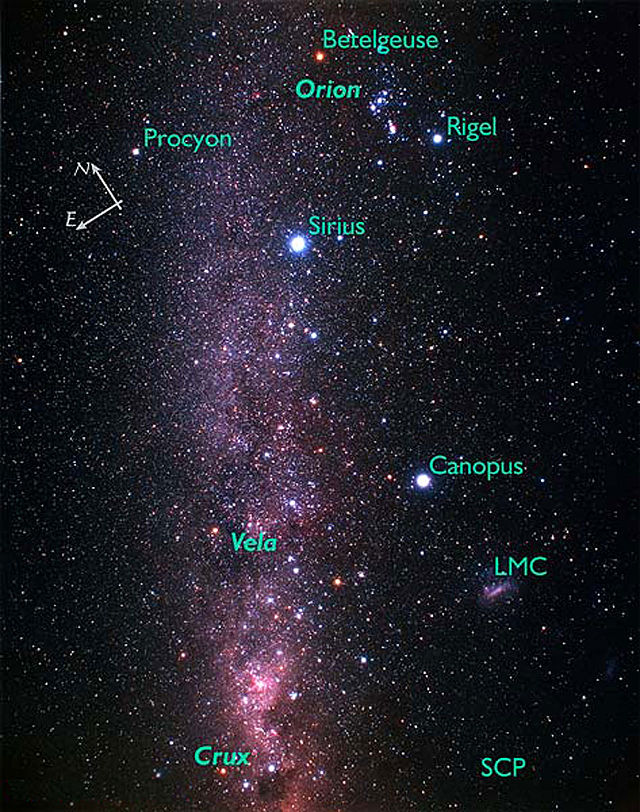The definition of black body radiation
When a black body is in equilibrium, the amount of energy entering a region of the object equals the energy leaving the same region. The radiation emitted by a black body is known as black body radiation, which has a continuous spectrum known as the black body spectrum, whose pattern is very well known (see the image below for examples).
Why does classical mechanics fail to explain the black body spectrum?
Classical mechanics fails to explain this spectrum because, according to the models, particles could vibrate at higher energies without any limit with increasing intensity. This would produce a spectrum with increasing values of intensity at higher frequencies (larger vibrations). However, the intensities in the black body spectrum are known to decrease with the wavelength approaching zero, which you can see in the image below. In the image, the curves in red, green, and blue correspond to different temperatures. The peaks of the emission intensity correspond to different frequencies that depend on the temperature.

Black body spectrum, Wikimedia Commons
It was not until the end of the nineteenth century that German-born scientist Max Planck came up with an idea to solve the disagreement between theory and experiments. In Planck’s model, energy was not shared between particles on arbitrary continuous values: it was only shared in fixed amounts that were multiples of a number “h”.
In light, for very high frequencies, the kinetic energy is calculated as h·f (where f is the frequency). It cannot be translated into thermal energy at these frequencies because this would mean infinite temperatures. This means that the constituents of the black body gradually plunge towards the region where they have no temperature, which you can see in the left part of the above image.
The right part of the image was perfectly understood without quantum physics because, for very low frequencies, the equivalent thermal energy is also very low. The understanding of the regime of high frequencies led to the prediction of the existence of photons, which were carrying the "quanta" (discrete pieces of energy measured by the constant h).
Characteristics of the black body spectrum
The most intensely emitted radiation by an object has a wavelength λ that is inversely proportional to the temperature. Higher temperatures will emit intense radiation at shorter wavelengths, and the colour will shift to the blue spectrum. The spectrum of radiation has the following characteristics:
The spectrum is continuous.
The spectrum peak moves to shorter wavelengths as the temperature increases.
The spectrum is 0 at 0 – this is the result of the quantisation of energy.
The spectrum values at larger wavelengths are smaller.
Astronomical objects can be modelled as black bodies. This is why black body radiation is very useful in physics, astrophysics, and astronomy.
Black body radiation colour chart
Temperature, wavelength emission, and colour perceived are related quantities for a black body. A colour chart can show the temperature-colour dependence of a black body. In astronomy, we can approximate the temperatures of astronomical objects by characterising their emission properties, as shown in the image below.

Black body diagram in sRBG from 1000K to 10,000K, Wikimedia Commons
The colours observed for any object are the product of the light (photons) emitted by the object or reflected by the object. Photons have a different wavelength depending on their energy: low energy photons are perceived as red, and high energy photons are perceived as blue-violet.
The colour difference you perceive is due to cells known as cone cells. Cone cells are very special photoreceptor cells that can convert incident light into an electrical signal that is delivered to the brain.
Cone cells are divided into three types of cells that are sensitive to a range of different wavelengths: short wavelengths like blue and purple colours, medium wavelengths like green and yellow, and large wavelengths like orange and red.
Stars and black body radiation
Stars can be modelled as black bodies, meaning their surface temperature and wavelength emission are related. Thanks to this relationship, we can differentiate which stars have a higher temperature than others by the radiation they emit and the observed colour. See the table below for some examples (where K stands for Kelvin and nm for nanometers):
| Colour | Star name | Temperature (K) | Peak emission (nm) |
| Blue-White | Rigel | 11,000 | 145 |
| Blue-White | Vega | 9602 | 310 |
| Yellow | Sun | 5778 | 550 |
| Orange | Aldebaran | 3910 | 740 |
Stars do not exhibit the same colour throughout their lifetimes, and the colour variation can tell us a lot about the temperature and processes happening inside.
One example is the specific case of a yellow star, like our Sun, that will become a red giant.
A star exists thanks to a process of nuclear fusion that happens inside it. This process primarily fuses hydrogen and helium, creating heavier elements. During fusion, the core of a star is in equilibrium, gravity tries to compress it, and fusion tries to expand it.

The balance of forces in a star dictates its size, colour, and emission in the case of stars that become red giants. Manuel R. Camacho – StudySmarter Originals
As the hydrogen is exhausted, the star’s core starts to compress due to gravity as the force balance is broken and the compression heats the nucleus. As a result, the star’s outer layers heat up, and the fusion process happens in the outer layers.

When the balance of forces in a star is broken, as in the case of red giants, the upper layers increase their size, and the surface lowers its temperature becoming reddish. Manuel R. Camacho – StudySmarter Originals
The process expands the star’s outer surface, and the surface cools down. During this process, the star becomes a red giant. As a result, the star’s colour goes from yellow to red, and its emission shifts to larger wavelengths (lower surface temperatures).
If you go outside during the night in some parts of the Northern Hemisphere and there is a clear sky, you may be able to see two stars: Betelgeuse and Rigel.
In the image below, the upper left red star is Betelgeuse. This star is a red supergiant star, and, as such, it must have a peak emission on the red spectrum. The star below Betelgeuse to the right is Rigel, and its blue colour indicates that its spectral peak must be around a blue-purple.

Position of Betelgeuse and Rigel in Orion, Wikimedia Commons
The emission peak of Rigel is measured at around 145nm. Meanwhile, the emission peak of Betelgeuse is measured at around 855nm. If you look at the table of colour spectra, you can see that the colour of Betelgeuse corresponds to a larger wavelength (red colours) and Rigel to a shorter wavelength (purple-blue colours).
Due to the law that connects the energy of photons with the frequency, we know that the photons emitted by Rigel have more energy than the photons emitted by Betelgeuse.
Application of black body radiation to black holes
Black holes are astronomical objects that can be modelled as black bodies. In this case, black holes are modelled as perfect absorbers that do not let any radiation escape. Black holes are still under heavy research, but they are expected to emit some kind of radiation as perfect absorbers.
A suggested mechanism proposed by the British scientist Stephen Hawking – known as Hawking radiation – takes the form of a black body radiation curve. However, no definitive answers have been found for these phenomena.
Black Body Radiation - Key takeaways
- A black body is a perfect emitter and absorber of radiation. In a black body, the radiation emission depends on its temperature.
- Because of the temperature-emission-frequency relationship, the emission peak gives us the body’s temperature.
- Stars, as emitting bodies, can be modelled as black bodies. Because of this, the colour of the star can tell us about its temperature. Red stars will be colder and blue stars will be hotter.
- Black holes are perfect black bodies, able to absorb all radiation. Several mechanisms have been predicted and theorised by which they can emit radiation. One of them is the Hawking radiation.












